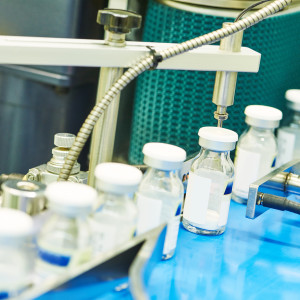Editor’s Note: For another viewpoint, see Counterpoint: Critical Supply Chain America Must Bring Home
Well-meaning but confused protectionists have bent President Trump’s ear on trade policy, spinning the narrative that the U.S. biopharmaceutical industry is overly dependent on Chinese manufacturers for raw materials.
They’re pressing him to implement a “Buy American” policy — during the worst pandemic in more than 100 years — for all biopharmaceuticals, active pharmaceutical ingredients and medical equipment.
This push to nationalize the biopharmaceutical supply chain is rooted in a single statistic that purports 80 percent of America’s drug supply comes from China.
But that figure is based on a fundamental misreading of a government report. And this distortion of the truth is spurring the Trump administration to advance a trade protectionist policy that would put American lives at serious risk for years to come.
The assertion that 80 percent of America’s drugs come from China is often used to inspire fear about access to needed medicines during the COVID-19 crisis. As Rep. Chip Roy (R-Texas) recently explained, “If the Chinese wanted to put us in a serious bind, they could withhold these lifesaving drugs from the United States.”
Not quite.
First, consider the source of that statistic. As Eric Boehm noted in Reason, most mentions of the number in the mainstream press point back to an August 2019 press release from Senate Foreign Relations Committee Chair Chuck Grassley (R-Iowa).
But Grassley doesn’t claim that 80 percent of American drugs come from China, just that “80 percent of Active Pharmaceutical Ingredients [API] are produced abroad, the majority in China and India.”
Dig a little deeper, and the original statistic looks even more spurious. Grassley’s figure comes from a 2016 Government Accountability Office (GAO) study. Yet that report only states that “80 percent of active pharmaceutical ingredients are manufactured in registered establishments in more than 150 countries.”
And even that figure is far from rock solid. That’s because the GAO report misused data from the Food and Drug Administration. By the FDA’s own admission, it doesn’t monitor “what portion of U.S. drug consumption is dependent on APIs from China or India, or another country.”
The FDA does have some data on API manufacturing facilities around the world. And according to a recent report that examined the facilities that supply APIs for drugs sold in America, only 13 percent are in China and an additional 18 percent are in India. Meanwhile, 28 percent of API facilities are in the United States.
The report goes on to note that, among the 370 drugs on the World Health Organization’s essential medicines list, only three contain APIs sourced entirely from China.
Add it all up, and one thing is clear: The claim that 80 percent of America’s drugs come from China doesn’t hold. The best data doesn’t come close to suggesting that America is particularly dependent on China for our pharmaceuticals. Our medicines originate from a diverse global supply chain that includes more than 150 countries.
But this hasn’t stopped the Trump administration from moving ahead with its “Buy American” policy.
According to White House adviser Peter Navarro, an executive order requiring federal agencies to source medical goods exclusively from domestic manufacturers could be imminent. As he put it in an interview in early May, “‘Buy American’ is going to be the law of the land, I believe, soon at HHS, DOD, the Veterans administration.”
That reform won’t make America’s healthcare system more resilient. In fact, it would almost certainly lead to severe price hikes and widespread pharmaceutical shortages. Again, only 28 percent of APIs are made here in the United States. Bringing that figure to 100 percent would mean building up manufacturing capacity at an unprecedented rate.
An undertaking of such magnitude would face all manner of regulatory and financial hurdles. According to a recent study by the Pacific Research Institute, relocating just a single drug manufacturing facility can cost $2 billion over the course of a decade. During this time, supplies of many drugs would drop to zero.
Amid a global health emergency like COVID-19, such massive supply chain disruptions would prove catastrophic.
“Buy American” advocates base their arguments on inflated statistics about dangers that simply don’t exist.
The biggest threat to America’s supply of medicines isn’t foreign manufacturers, but policies that put protectionist ideology before basic facts and human life.

